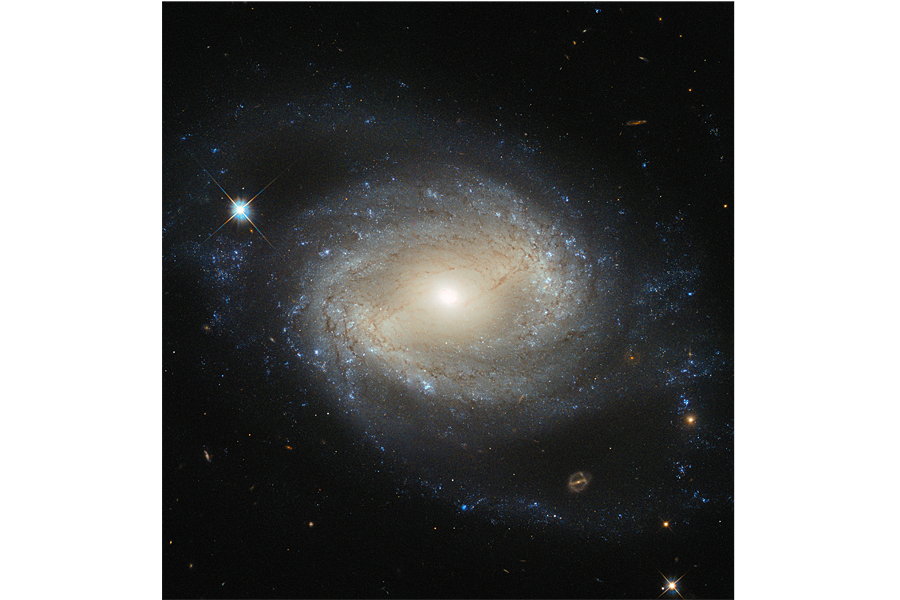Spectacular Hubble photo: A bright galaxy holds a hidden secret
Over 70 million light-years away lies a galaxy called NGC 4639. Despite this distance, the Hubble Space Telescope captured a spectacular – and remarkably clear – image of the spiral galaxy.
On the surface, the photo appears to be an excellent example of a barred spiral galaxy with a visual bar running through the core of the galaxy – no small feat in and of itself. But researchers also found that the image held a surprise hidden in that bright core: a massive black hole.
Like a hungry monster the black hole consumes the gases surrounding it, emitting powerful X-rays as the hot gas surges toward the black hole. A broad spectrum of light also emanates from the center of the galaxy. Together, these various radiations give the galaxy its defining features.
The naked, untrained eye cannot discern the black hole from the star factory around it, but scientists were able to identify some telltale features of the voracious core in the spectrum of light coming from the center of the galaxy.
NGC 4639 is neither outstanding nor unique in its structure. Scientists think most galaxies have a black hole at their core.
The Hubble image displays the barred spiral well. A barred spiral is characterized by a bar-like structure at the centre of the galaxy.
Composed of stars, bars are found frequently in spiral galaxies. Some two-thirds of spiral galaxies contain bars. Astronomers think the bar formation may be a natural phase of a spiral galaxy’s evolution.
Sprinkled like fairy dust throughout a galaxy’s spiral arms are bright star nurseries. These regions of active star formation can extend several hundred light-years across and contain hundreds or thousands of young stars.
NGC 4639 is tucked in the Virgo cluster of galaxies as part of the constellation Virgo.
Astronomers and other space enthusiasts celebrated 25 years with Hubble earlier this year. Over a quarter century, Hubble has beamed home many spectacular images.
As The Christian Science Monitor’s Pete Spotts wrote in April:
Dubbed the 'people’s telescope,' it has provided the raw material for astronomical images that some art historians have likened to the Romantic landscapes captured in 19th-century paintings and photographs of the American West. It has brought the cosmos into classrooms and living rooms around the world.
Hubble turns to a closer celestial body
Researchers also use Hubble to capture yearly photos of Jupiter, in an effort to document and map changes to the landscape.
Through these images, researchers have been keeping an eye on Jupiter's Great Red Spot. This year's images, released Tuesday, continue to show that the spot is shrinking, as previous years have suggested.
These new images also feature a wave, only seen once before on the planet decades ago. A similar wave pattern can appear on Earth associated with cyclone formation.
“Every time we look at Jupiter, we get tantalizing hints that something really exciting is going on,” said Amy Simon, a planetary scientist at NASA’s Goddard Space Flight Center in a NASA news release. “This time is no exception.”






